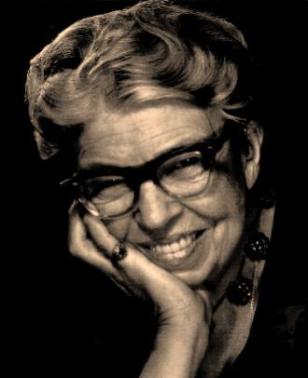Please help me welcome Ken Ronkowitz, an unretired educator, poet, and prolific blogger who taught middle and high school English in New Jersey* for 25 years before starting a second career in higher education.
In today’s guest post, Ken shares why he left k-12 education, how he found a “parachute” to life after teaching — and the 12 skills that will help you make your own jump.
Strap in and enjoy! 🙂
*Fun (or perhaps not-so-fun) fact: Chris Christie was one of his students.
Jeff Selingo was an editor at The Chronicle of Higher Education, but left to become a book author and columnist, still focusing on colleges. His new book is titled There Is Life After College. The title is not a question — Is there life after college? — but a clear statement that there is an afterlife. That’s the way I view my lifetime of teaching. There is an afterlife.
I don’t hate teaching. But I left teaching. I had been teaching middle and high school for 25 years. I still enjoyed it — most days. I wasn’t “burned out.” I told my wife, also a teacher, that I felt like some days I was going to school in the morning, but some days it felt more like going to work.
Twenty-five is a magic number for teachers in New Jersey because it means you are entitled to your full pension. (A benefit that is no longer there for new teachers, thanks to one of my former students, Governor Chris Christie.) I decided that I was going to leave as sitcom show stars I admired like Mary Tyler Moore and Jerry Seinfeld had — while the ratings and reviews were still good.
I had no real plan for what would come next. One of my colleagues was incredulous. “No one leaves without knowing what comes next,” he said.
“It’s kind of like jumping out of an airplane,” I replied. “Pretty exhilarating at first. I just have to hope I have a good parachute.”
My parachute was that a) I could collect my pension if need be (early and with a penalty, but in an emergency, an option) b) my wife was going to continue to teach and was okay with me taking some time to find something else. And, most importantly, c) I knew I had marketable skills.
Though I wasn’t a math or science teacher with STEM skills that could work for me, I was a very good English teacher. I am a good writer and communicator who had also gotten a master’s degree in film and video, and had picked up a good amount of computer and technology skills along the way.
One key moment in believing in my skill set had occurred a few years earlier when I first considered leaving teaching. A close friend worked for AT&T and said that if I was interested in applying there, I should look at their skills list that was used to sort résumés. The list contained a good number of skills I’d never seen before, including something called “platform skills.”
Platform skills, I discovered, is the name for presentation behaviors that a trainer uses to transmit content effectively. They are a blend of skills you need to do training and make effective presentations.
“You have no problem getting up in front of a group on a platform and talking. Most of us are not comfortable with that,” my friend told me.
He is correct. Many surveys show that speaking in front of a group is the number-one fear of most people. As Jerry Seinfeld liked to point out, fear of death is number two.
Platform skills are more than just being able to get up in front of a group to speak.
How many of these dozen skill questions can you answer with “yes”?
1. Can you be in front of a group of 5, 50, or 500 and be calm and professional?
2. Can you clearly communicate the session’s topic, goal, and relevance to the participants at the beginning of the session?
3. Can you use humor, analogies, examples, metaphors, stories, and delivery methods other than lecture or PowerPoint to engage an audience?
4. Can you facilitate large- and small-group discussions?
5. Can you give constructive oral and written feedback?
6. Can you plan and deliver presentations that convey complex information in a clear, accessible way?
7. Can you use an appropriate variety of audiovisual technologies to present information?
8. Can you establish and implement grading evaluation criteria?
9. Can you respond to audience and supervisor feedback in a timely fashion?
10. Can you work independently without supervision?
11. Can you write documents tailored for specific audiences?
12. Can you set and meet weekly, monthly, and yearly goals?
Every good teacher I know has those skills. Sure, some of us have more of some skills and less of others, but we’re not missing any of them. Those twelve platform skills are a very good starting place for building a résumé and preparing for an interview.
Moving from teaching to training is no great leap. It is a fairly natural one. I know several teachers who went that direction or became involved in jobs related to education, like academic publishing. But those skills also work for human resources and other business applications.
When I left teaching, I decided to take the summer off and not really look seriously for a job until the fall. I spent the summer working on a new résumé and sifting through the boxes of plans and lessons that I had taken from my classroom “just in case I needed them one day.”
That August, I saw an ad for a position as a director of instructional technology at a nearby university. After I did some searching on what that actually meant, I realized that I had some experience with all the requirements, though no experience in higher education. I applied, interviewed, and was in my new job before the summer was even over.
I have worked for that university, NJIT, in different capacities ever since. Twenty-five years teaching in a public school system had prepared me well for ever-changing priorities, new programs and having to learn new skills while I was using them in my job.
Besides supervising staff and student workers, I helped design courses, ran faculty training in both tech tools and pedagogy, chaired committees, and even started teaching a few classes a year.
I also picked up new skills in web design, coding, audio and video production, social media, and grant writing. I was offered a job managing a large grant at another college and took it for five years. I started my own consulting LLC in order to do training for other colleges, and took on web and social media clients.
This year, I think of myself as semi-retired (or, as my wife describes it, “someone with poor retirement skills”). I’m no longer looking for any full-time gig. I have my pension and benefits and a new 401(k) from my higher ed years, and new projects keep finding me. They keep me busy and add some income, but I turn down as many offers as I accept.
I still teach a course or two each year. Often, those courses are graduate courses that are online, but I still get energized getting in front of a class or group face-to-face. That’s why it saddens me to read reports that a strong majority of teachers surveyed about the profession say they are “unlikely” or “very unlikely” to encourage graduates to become teachers. That means they are in a job that they wouldn’t even recommend to others.
If it’s the case that you aren’t as passionate, idealistic or excited about teaching as you once were, I think you should change professions. Of course, I would say the same thing if you worked as an accountant, landscaper or pharmacist.
I had a former student who had worked for three years on Wall Street visit me. He said he had loved my class, loved literature and writing, and was not happy in his work. “Is a love of literature and writing a good enough reason to become an English teacher?” he asked me.
Well, I love those things too, but I had to tell him no, that’s not enough to be a teacher. Teaching is, for better and worse, a lot more than just a love and knowledge of subject matter. Though knowledge and passion for a subject matters more and more as you move up the grades and into high school and beyond, all levels of teaching require so many other skills, and much of your time will be spent doing things other than actually teaching your subject.
Maybe to a ninth-grade teacher, college seems like an easier gig. Only a few classes per day. Self-motivated learners. High-powered content. But that’s as much of a misconception as the idea that a high school teacher is done with work at 2:30 pm, has lots of vacations and summers off, and can teach the same lessons a few times a day for only 45 minutes. Teaching isn’t easy at any level or in any subject.
Whether you want to stay in education or try something completely different, if teaching is making you miserable, give notice as soon as possible. You can leave. You should leave. And there are other jobs that you are qualified to do. Prepare your parachute and jump.
Related
Five Skills Teachers Have That Employers Want
Instagram It: How To Tailor Your Career Change Resume in Three Steps
Ten Action Verbs That Will Make Your Post-Teaching Resume Pop
What It Takes to Find Life After Teaching: Advice from a Former Science Teacher
Life After Teaching Interview: Meg Olsen, Social Justice Advocate
Life After Teaching Interview: Marie Ardito, Retiree Advocate















